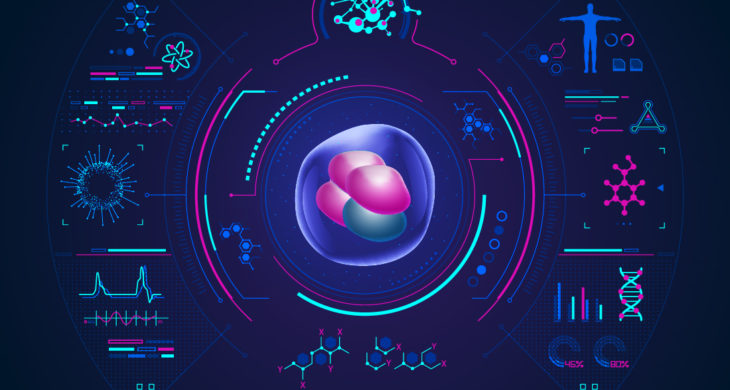
Date: 4th October 2019
The term “chimera” has come to describe any mythical or fictional animal with parts taken from various animals. From an ethical perspective, many people might prefer it to stay as this fantastical legend. However, scientists are now turning to this mythological concept to alleviate the chronic shortage of organs available for transplant.
Whilst not creating chimeras in the traditional sense, human-animal hybrids are being designed as organ incubators, whereby human cells are inserted into animal host with the animal subsequently acting as a surrogate for the ‘human’ organ.
History of human-animal hybrids
- Human-Pig Hybrid: In 2017, Juan Carlos Izpisua Belmonte from the Salk Institute in California and his international team created the first human interspecies chimera.
In this seminal paper, initial experiments used CRISPR gene editing to eliminate fundamental mouse genes critical for the development of particular cell lineages. Rat stem cells were then introduced and were capable of generating organs in these rat-mouse chimeras. These hybrids developed into adulthood with apparently normal appearance, physiology and life span.
Interestingly, rat-pig chimeras were not viable suggesting that perhaps the evolutionary distance between these two species is too far.
Taking the proof-of-concept one step further Belmonte and his team subsequently attempted to grow the first embryos containing cells from both humans and pigs. Human pluripotent stem cells (hPSCs) were injected into pig blastocytes and embryos transferred into surrogate sows. Although it was seen as an overall success, the efficiency was low with <10% of the implanted embryos surviving to 21-28 days post implantation. The embryos also showed developmental retardation and their levels of chimerism (around one in a hundred thousand cells being human) were much lower than that in the rat-mouse studies.
- Human-Sheep Hybrid: In early 2018, Pablo Ross from the University of California, US, announced at the American Association for the Advancement of Science annual meeting that he and his colleagues had successfully created human-sheep hybrids.
Although, the fine-tuned protocol used led to increased levels of human cells contributing to the chimera (one in ten thousand cells being human), the levels were still too low to consider these organs being close to being transplant-ready.
- Human-Monkey Hybrid: In July this year, Juan Carlos Izpisua Belmonte once again hit the news with his chimera experiments, this time in monkeys.
By disrupting a crucial regulatory gene required for the development of various organs the group apparently were able to rescue potential defects by injecting embryos with ‘replacement’ human stem cells. Whilst the reports of success were announced in the Spanish newspaper EL PAÍS, the work however, is yet to be published in a peer-reviewed journal.
The team, made up of members of the Salk Institute and the Murcia Catholic University in Spain performed the experiments in China due to less restrictions surrounding this type of research and a more developed infrastructure.
Changes in regulations allowing human-animal hybrids
In November 2018 we saw the first reports of genetically-modified babies in China where regulations surrounding this type of experimentation appear less regulated than in the US or Europe.
With the WHO implementing a global registry for human genome editing to develop global standards for governance it is unclear at this time how chimeras may fit, if at all, within this policy.
Japan, has now entered the debate and in March the Japanese government relaxed rules restricting the growth of human-animal hybrid embryos beyond 14 days or the transplant of such embryos into a surrogate uterus.
Then, in July this year, the Japanes government approved the first human-animal embryo experiments, with the stem-cell scientist Hiromitsu Nakauchi and his team being the first to receive this government support.
Nakauchi plans to inject human cells in mouse and rat embryos and then transplant those embryos into surrogate animals with the eventual aim to grow the embryos full term.
Hiromitsu Nakauchi has a chimeric predigree, in 2010 he cracked open the field showing that a rat pancreas could be grown in a pancreas-disabled mouse, and subsequently in 2017 diabetic mice could be treated using chimeric mouse pancreases grown in rats.
Ethical organ transplant
Around 20 people die every day waiting for an organ transplant in the US alone. The drive to find alternatives to organ donors is therefore high, however, both scientific and ethical concerns surrounding human-animal chimeric organs remain high as well. For example, the question has been posed as to whether any ‘stray’ human cells could enter the animal brain and increase its chance of becoming ‘humanised’ and, although steps have been taken to ensure this doesn’t happen, the risk cannot be entirely eliminated.
Furthermore, clinical questions surrounding patient safety regarding hybrid organs are yet to be addressed, so the road ahead here still looks long.
In parallel to this approach, however, the use of 3D bioprinting to generate organs is gaining momentum as a future plausible alternative and we have recently reported inroads being made, including progress towards rebuilding the human heart.
Whilst potentially side-stepping a number of ethical concerns raised by hybrid organ development, the question of whether technology can recapitulate natures’ intricacy is likely to be tested. Ultimately, with lessons being learnt from both distinctly different methodologies, let’s hope that - in our pursuit to finding an alternative to human organ donation - we’re able to leverage learnings from both approaches.
